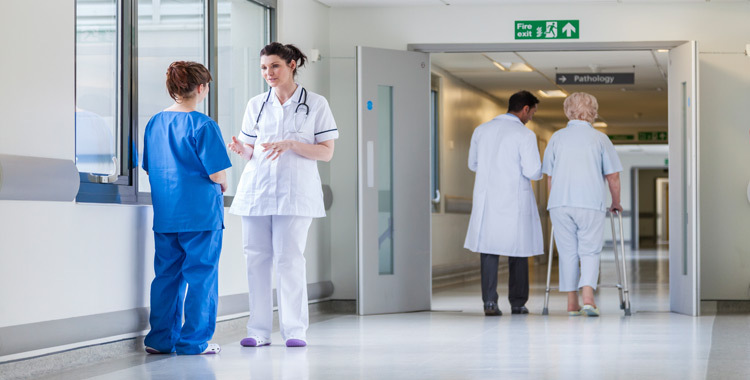The nature of a healthcare environment means that patient safety is paramount, an unsafe healthcare setting indicates a dangerous contradiction which can put patients at great risk. Steps must be taken by caregivers to ensure maximum safety is at the centre of everything they do, implementing simple procedures in order to provide a safe, healthy environment.
Who is at risk?
Patients and staff are both at risk when essential safety assessments do not take place. Staff must be safe and healthy in order to achieve the speedy recovery of their patients. Moreover, many accidents in healthcare environments prolong residency and often worsen patient illnesses. Patients with mobility issues are at even more risk due to tripping hazards, wet surfaces or unsuitable flooring.
Look out for these vital aspects when considering a safe healthcare environment:
Lack of Cleanliness
Basic hygiene practice is mandatory in any healthcare environment, be it hospitals, nursing homes or dental surgeries. As technology moves forward there are more and more ways to ensure optimal cleanliness and avoid cross-contamination. The technological advances in healthcare flooring materials not only means that many have great slip resistance properties but also offer fast and effective cleaning properties helping to eliminate any potential threats via infection.
Other valuable advances in technology helping to eliminate infection include ultraviolet technology, fogging with ozone mists or vaporized hydrogen peroxide and Adenosine triphosphate monitoring systems. Even enhanced hand washing monitors and using antimicrobial materials like microfiber cloth are great ways to create a safe setting.
Clutter and trip hazards
As well as controlling infection, minimizing the chance of falls is hugely important in healthcare. Falls are more common in elderly patients who may already struggle to move around, so controlling any clutter is essential. Many falls are preventable simply by keeping spaces clear of obstructions or any hidden hazards. Often, hospital corridors are used for storing equipment waiting to be used. By storing these in secure cupboards or rooms, equipment is less likely to present tripping hazards to patients and therefore less likely to prolong their stay in healthcare.
Once potential obstacles are removed from the environment it is also important to look at the flooring itself. Finding out whether the floors meet the standard of slip resistance required via a pendulum test can contribute hugely to minimising the number of falls
Poor design of patient areas
Many hospitals have good design principles in place which should always be followed to ensure top patient safety. Evidence-based designs are better for visualising how the layout will work in practise during busy caregiving hours. Environmental designers should consider better lighting to reduce human error, and decentralised nurse stations to allow easy access for patients.
Taking your flooring material into account in the design stage can contribute greatly to a safe healthcare environment. If your premises has existing flooring then the design phase is a great time to measure its slip resistance as well as carry out the necessary laboratory testing to ensure maximum safety. Also, adding things such as multiple handwashing stations during the design can reduce any unnecessary rushing around for patients and staff, therefore improving both safety and hygiene.
Worn flooring materials & poor floor maintenance
Factors such as wet or slippery flooring should always be monitored and cleaned up accordingly, as fast as possible, along with appropriate safety signage. The correct flooring along with regular slip testing makes patient and staff safety much easier to monitor and maintain. As healthcare settings are prone to spillages and/or wetness, high levels of sustainable slip-resistant flooring is key to protecting against slip or trip hazards. Flooring materials can also deteriorate over time so attention should be given to monitoring the condition of these. Early risk assessment can determine the best type of safety flooring for the environment as well as identify safety standards in any existing materials.
Simple steps such as appropriate footwear choices, drainage and tailored cleaning systems help to reduce slip and fall risks, but these principles are best when used with well-maintained safety flooring.
If you are concerned about the slip resistant properties of the flooring at your healthcare premises or would simply like to book a pendulum slip test, get in touch with us here at National Testing. We can help you create a robust safety approach for your healthcare environment.

